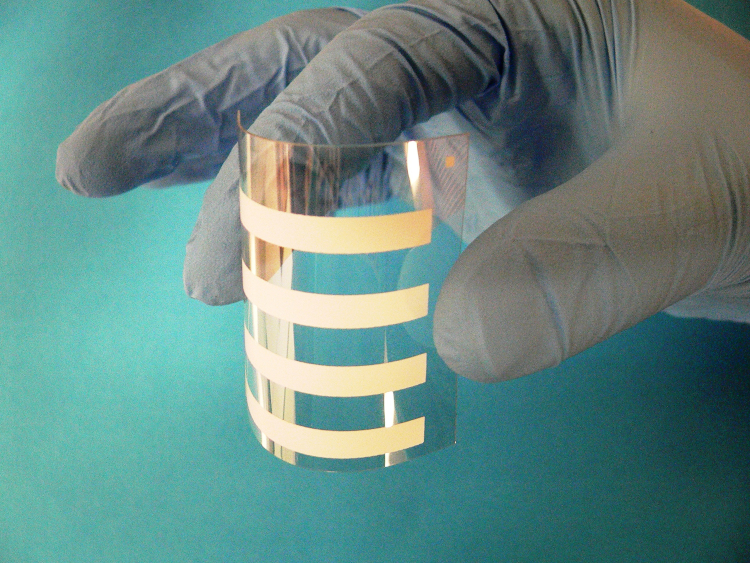FLEXMAT
Flexible DSSC photovoltaic cells based on innovative materials and new conception dyes from natural and synthetic origins
Principal investigator: Alessandra Sanson
Involved personnel: Alex Sangiorgi
Starting date: 01/07/2011
Duration: 48 months
Total funding: 837.842 €
Call: POR-FESR 2007-2013, Regione Piemonte
Coordinator: Paolo Castelli (R.T.M. SpA)
Consortium: 9 partners of which 5 companies, 2 Universities, 1 Polytechnic and 1 CNR
The new materials for applications in the energy field are constantly evolving and the different technologies for the generation of energy, especially those that do not use fossil fuel sources, are experiencing a strong drive for innovation. Dye-Sensitized Solar Cells (DSSCs) are the most viable alternative to silicon cells. However, the industrialization of these cells requires further study for materials development and for assembly technologies optimization.
The project goal was focused on developing and optimizing new materials and manufacturing processes for the production of flexible DSSC photovoltaic cells by using mesoporous semiconductors realized with an innovative method of laser nanostructuring and newly developed synthetic and natural dyes extracts from plants and fruits.
The cell substrate and its packaging have been made with polymeric materials having adequate properties (mechanical and chemical resistance, low permeability to atmospheric gases), obtaining a thin, light and low cost final product. The flexibility of the polymers has significantly expanded the possibilities of use compared to the current ones of rigid photovoltaic cells. The sealing of the cell was obtained with a new laser-based method.
The following objectives have been achieved:
- A new method of manufacturing and “cold” sintering the TiO2 semiconductor after deposition on the polymeric substrate;
- The synthesis of innovative new-concept absorbent dyes in red and near infrared region;
- The development of an efficient and industrializable natural dyes extraction process from plants and fruits;
- The selection of hybrid inorganic-organic additives (and synthesis of innovative materials) useful for the preparation of semi-solid electrolytes;
- The selection of polymers with adequate performance to be used as substrate and packaging and, finally, an innovative sealing method based on a laser technology.
The research activity performed at ISTEC involved the use of natural dyes belonging to the group of anthocyanins, betalains and their derivatives from vegetable or synthetic origin, as sensitizers in photo-electrochemical solar cells. Finally, ISTEC also dealt with the formulation of TiO2-based screen printing inks and their deposition on flexible transparent substrates.
